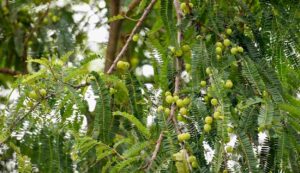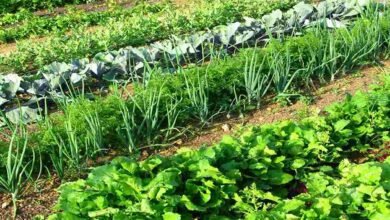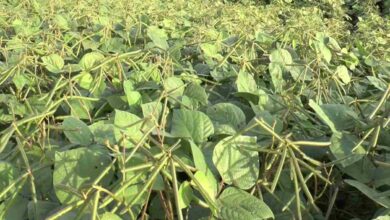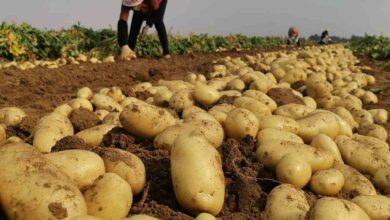Keep these 9 things in mind while cultivating Amla, you will never suffer loss
Amla Cultivation: Amla (Phyllanthus emblica) is a highly prized fruit crop because of its many nutritious components, therapeutic uses, and ability to withstand extreme weather. Successful amla production requires careful control of a number of variables, including pollination, site selection, soil preparation, irrigation, pest and disease management, and post-planting care. This post will teach you the most important things to consider while planting amla, with a focus on pollination and other crucial elements for the best possible development and output, including.

1. Selection of Varieties
To guarantee improved production and adaptability to regional circumstances, it is crucial to choose appropriate cultivars. Popular types that are renowned for their great production and adaptability include Banarasi, Krishna, NA-7, and Chakaiya. Make sure the different types you plant are compatible with cross-pollination, since this improves the quality and set of the fruit.
2. Aspects of Pollination
For amla fruit production to be effective, pollination is essential. Although it may self-pollinate, amla is mostly a cross-pollinated crop. Cross-pollination, on the other hand, is favored as it enhances quality and produces higher fruit set. When it comes to pollination, the following measures should be followed:.
Distance Between Trees
Pollen may be effectively transported from one amla tree to another by wind or insects when there is an adequate 8–10 m gap between them. Tree overcrowding may result in less effective pollination.
Planting Types that Pollinate
Plant at least two or three suitable kinds near one another to promote cross-pollination. In addition to increasing fruit set, this method improves genetic variety.
Pollinators of Insects
Bees and other insect pollinators are crucial, even though wind is the primary pollinator of amla. It’s critical to keep pollinator populations healthy. Because it damages helpful insects, avoid spraying insecticides during the blossoming season.
Conditions of Weather
Environmental factors have an impact on pollination. Good pollen viability is encouraged by moderate humidity and ideal temperatures between 20 and 30 degrees Celsius. Pollination is hampered by high temperatures or copious amounts of rain throughout the blossoming season.
3. Land preparation and site selection
When growing amla, choosing the right location is crucial. The following elements need to be taken into account:
Drainage and soil type
As long as the soil is well-drained, amla may thrive in a variety of soil types, including clay and sandy loam. The ideal pH range for soil is 6.0 to 8.0. Make sure the soil is not waterlogged before planting since too much moisture might cause root rot.
Temperature and Altitude
Both tropical and subtropical regions are suitable for amla. A height of 500–1500 meters above sea level is suitable. Since amla needs full sunshine to develop as best it can, make sure the location receives lots of sunlight.
Windbreaks
Installing windbreaks around the orchard may shield the trees from harm and help stop pollen loss during the blooming season in regions with high wind speeds.
4. Planting Time and Technique
Since the trees benefit from natural rainfall during the establishing period, the monsoon season (June to September) is the ideal time of year to plant amla. When the soil is sufficiently wet to sustain the development of the young plants, planting should take place.
Setting up a Pit
Make 1 x 1 x 1 m trenches and fill them with a soil, manure, and organic compost combination. Before planting, let the pits rest for two to three weeks. This gives the plants a healthy foundation.
Planting
Plant the seedlings carefully in the trenches that have been created. After planting, water the plants right away to let the dirt settle around the roots.
5. Management of Irrigation
Despite its resistance to drought, amla requires frequent watering during the first few years to develop properly. The trees can withstand dry circumstances once they are established, but for a decent harvest, frequent watering is necessary during blooming and fruit development.
The Interval between Irrigation
Water the trees every seven to ten days throughout the summer, depending on how wet the soil is. Steer clear of overwatering, as this might cause root infections.
Using drip Irrigation
Since drip irrigation systems guarantee effective water usage and maintain ideal soil moisture levels, they are strongly recommended.
6. Management of Nutrients
For amla trees to develop healthily, they need to be fed enough. Both organic and inorganic nutrients should be included in a balanced fertilization program, such as
Manure from Organic
Before planting, fill each trench with ten to twenty kg of compost or farmyard manure.
Chemical Fertilizers
Give each tree two doses of nitrogen, phosphorus, and potassium each year in the following ratio: 600:300:300 grams. It is recommended to provide the first dosage in June and the second in September.
Micronutrients
Fruit growth and blooming depend on boron and zinc. During the pre-flowering and fruit development phases, foliar treatments of these micronutrients may increase output.
7. Control of Weeds and Pests
Regular weeding is essential, particularly in the early phases of tree development, since weeds fight with amla trees for nutrients and moisture. Mulching the area surrounding the tree’s base helps keep the soil wet and inhibit weed growth.
Aphids, gall producers on the shoots, and caterpillars that consume bark are common pests in amla farming. It’s critical to regularly check for indications of a pest infestation. To lessen the effect of pests, use biological control agents like Trichogramma and bio-pesticides based on neem. To save pollinators, stay away from chemical pesticides, particularly while flowers are in bloom.
8. Trimming
Pruning is necessary to preserve the tree’s structure and encourage airflow, both of which lower the danger of disease. By allowing more light penetration, it also enhances fruit quality. Trim any unhealthy or dead branches.
9. Harvesting and Post-Planting Maintenance
To guarantee good development, make sure the trees get enough attention after planting. This comprises…
Mulching
By spreading organic mulch around the tree’s base, you can keep the soil wet and stop weeds from growing.
Taking a Bet
Staking may be necessary for young plants in order to shield them from severe winds and guarantee straight growth.
Gathering
Harvesting amla fruits occurs when they become lustrous and light green. Harvesting the fruits on time is crucial to prevent fruit breaking.





